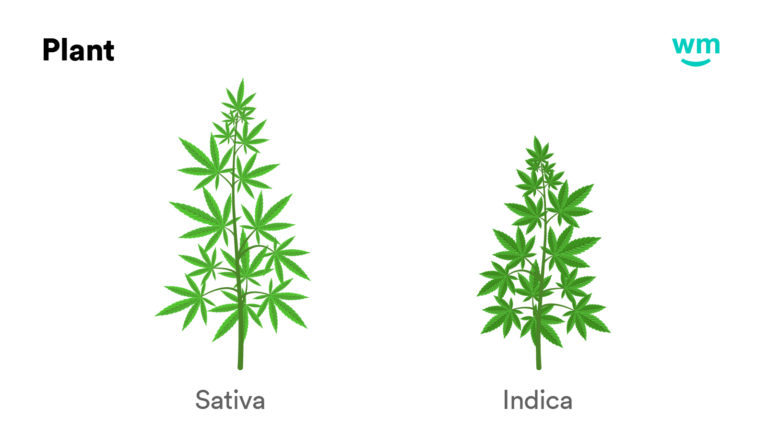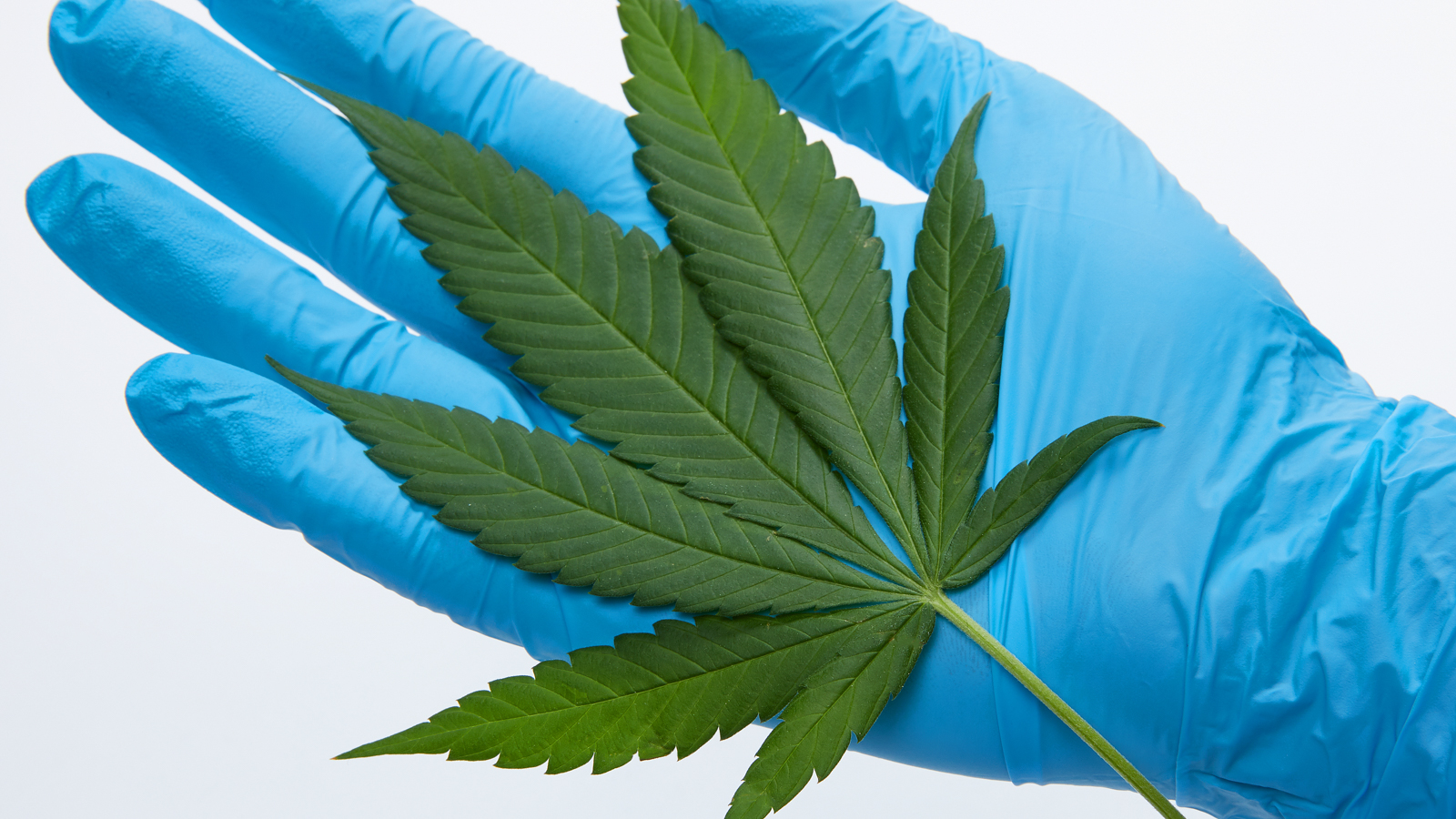Indica is a term often used to describe cannabis strains and products with sedating, relaxing, and strong physical effects. In botanical terms, indica cannabis plants are typically short in stature with broad leaves and shorter growing cycles than their sativa counterparts. Indica strains are well-suited for growth in cooler climates due to their shorter flowering periods.
 Photo by: Gina Coleman/Weedmaps
Photo by: Gina Coleman/WeedmapsImage lightbox

More about indica
In the weed world, both cannabis indica and cannabis sativa are heavily associated with their perceived effects on the human body. According to the classic definition of indica strains, which it turns out is overly simplistic, indicas tend to produce a strong physical high as opposed to a more cerebral high. For most marijuana consumers, the term indica evokes memories of haziness, couch lock, and deep relaxation.
The industry uses these pop-culture definitions to help it market cannabis strains and thousands of other cannabis products. But while the effects typically associated with indicas may have originated with the plant, there is no real correlation between the effects and the physical structure of today's cannabis plants.
The terms indica and sativa are far more useful for cultivators than for consumers. In cultivation, the terms are commonly used to describe the plant's morphology, or physical characteristics, and its growing cycle.
Taxonomic history of cannabis indica
The taxonomy of marijuana we're familiar with today begins with French biologist Jean-Baptiste Lamarck, who identified Cannabis indica in 1785 as a separate species from Cannabis sativa, as classified by Swedish botanist Carl Linnaeus 32 years earlier. Lamarck primarily based his classification on morphological differences from Linnaeus' C. sativa plant. But he did note that C. indica was a more potent inebriant than C. sativa.
The shift from Lamarck's classification to the current popular definition of the indica cannabis plant came in 1974 when American biologist Richard Evans Schultes applied Lamarck's term to marijuana plants in Afghanistan. These plants looked different from Lamarck's Indian plants, exhibiting a shorter stalk and wider leaves.
Schultes' C. indica classification ended up having a huge impact on the development of modern-day cannabis taxonomy, tying the indica variety to a distinct geographic origin. This would later be emulated by Florida State University biologist Loran C. Anderson, who designated Afghan plants as C. indica and Indian plants as C. sativa.
Today, we reserve the indica label for short, broad, bushy plants of Afghan heritage. Most experts only recognize one cannabis species, and it remains highly debated whether indica is a subspecies of Cannabis sativa. Meanwhile, the consumer marketplace still recognizes two varieties — indica and sativa.
What's the difference between indica plants and sativa plants?
As indicated above, while popular definitions of marijuana subspecies posit a number of fundamental differences between indica strains and sativa strains, this distinction is most useful in the context of cultivation. Differentiating plants according to growth traits and physical makeup is a useful, efficient cultivation practice, even if it's not as helpful to consumers.
 Photo by: Weedmaps
Photo by: WeedmapsImage lightbox

The real difference between indica vs. sativa strains is their observable traits during the cultivation cycle. Indica strains tend to grow into short plants with thick stems. Similarly, the cannabis indica plant tends to produce leaves that are broad and deep green in color. Cannabis indica plants also mature much faster than sativas, with 35-to-65-day flowering times, and grow sufficiently well in cold climates with short seasons. Their buds tend to be denser and more compact than sativa buds. Popular indica strains include Hindu Kush, Northern Lights, and Blueberry.
Sativa plants tend to have longer flowering cycles, fare better in warm climates with long cultivation seasons, and usually grow taller with light-green, narrow leaves. Popular sativa strains include Jack Herer, Durban Poison, Green Crack, and Sour Diesel.
Traditional taxonomy also attempted to identify differences in the chemical compounds produced by common indica and sativa strains. In the wild, indica plants tend to produce more THC than sativa strains.
Crossbreeding has dominated the last 50 years of marijuana cultivation, virtually eliminating the possibility of encountering pure indica or sativa strains. Rather, the way plants are classified today usually means that the plant is predominantly one or the other.
What are the effects of indica strains?
While the indica/sativa taxonomy is efficient for cultivators, it doesn't help consumers predict the effects of a given marijuana plant. Human intervention has dramatically changed the chemical makeup of cannabis. In the days of Linnaeus and Lamarck, the effects of C. indica and C. sativa plants probably aligned more closely with their physical characteristics. Today, a plant's appearance gives away nothing about what kind of effect it will produce.
 Photo by: Gina Coleman/Weedmaps
Photo by: Gina Coleman/WeedmapsImage lightbox

Within the cannabis community, indica plants are often characterized as having sedative effects, which typically lead to an intense body high, while sativa strains are thought to be uplifting and produce more of a head high.
In an interview published in the journal Cannabis and Cannabinoid Research, Dr. Ethan Russo, a psychopharmacology researcher and board-certified neurologist on the forefront of cannabinoid research, explained, “the sativa/indica distinction as commonly applied in the lay literature is total nonsense and an exercise in futility.” In reality, the effects of marijuana are based on the unique chemical profiles of each variety rather than a genetic lineage.
For example, a landrace cultivar with indica lineage grown in a new environment could potentially produce a unique chemical profile that would cause uplifting effects.
Furthermore, cannabis effects have more to do with the makeup of a user's individual endocannabinoid system than a plant's genetic lineage. Individuals may have different experiences based on the way their endocannabinoid system reacts to consuming a given marijuana plant. One user may report an indica-like effect from a plant with indica lineage while another will report an uplifting sativa-like effect from the same plant.
If you go to your local dispensary today, you'll probably be faced with products labeled either indica, sativa, or hybrid. The addition of hybrid strains to the cannabis lexicon is a sign that cannabis marketing is catching up to reality. All modern strains are technically hybrid strains.
Hybrids and ruderalis — it's not just indica vs. sativa
To wrap things up, there are a few additional factors that further complicate the standard distinction of indica vs. sativa. One factor is the long history of crossbreeding and genetic crafting of different types of strains. The other is the existence of another type of cannabis called C. ruderalis.
As mentioned above, the long history of marijuana breeding among skilled cannabis growers has virtually eliminated any pure indica strain or sativa strain. Instead, we have a rapidly growing number of new strains that are more accurately described as hybrids, among which there are sativa dominant strains (sativa dom) and indica dominant strains (indica dom).
As growers and breeders create hybrids, they are able to produce certain strains that highlight specific features, create varying effects, and produce particular concentrations of THC, CBD, and other cannabinoids. For example, some of these new and unique strains may focus on producing a particular CBD to THC ratio to deliver desired medicinal or recreational effects.
The key idea here is that an educated approach is less about indica vs. sativa and more about understanding what you're looking for in your experience and how to find the right hybrid strain for you.
Cannabis ruderalis further complicates the traditional distinction between indica and sativa. It is generally accepted among academic research institutions, as well as others in the industry, that ruderalis strains are their own species of plant rather than a subspecies of C. sativa.
Ruderalis plants have very low THC content. Lacking psychoactive properties, these plants are not used for recreational purposes. However, despite the low THC content, ruderalis plants often have high levels of CBD. This makes them potentially suitable for medicinal patients and are wellness consumers looking for CBD without any THC.
Bottom line: cannabis indica vs. cannabis sativa
Research has not yet caught up to the wealth of marijuana varieties in circulation today. Terpene and cannabinoid profiles are becoming more prominent in product marketing as the average marijuana consumer becomes more educated about the complex nature of the cannabis plant.
As Dr. Ethan Russo explained, the reason most indica strains are associated with feelings of sedation has more to do with the concentration of the terpene myrcene than it does the cannabinoid content or the structure of the plant.
Ultimately, the terms indica and sativa are far more valuable for cultivators than they are for consumers. Until we collectively develop a new taxonomy to give people a better idea of what effects they're signing up for, it's important to remember that indica plants are not from pure lineages and are not guaranteed to produce indica-like effects. Similarly, today's sativa strains are not necessarily going to always produce the stereotypical sativa effects. In reality, the distinctions between indica and sativa have broken down to the point that most cannabis is better described as a hybrid.

